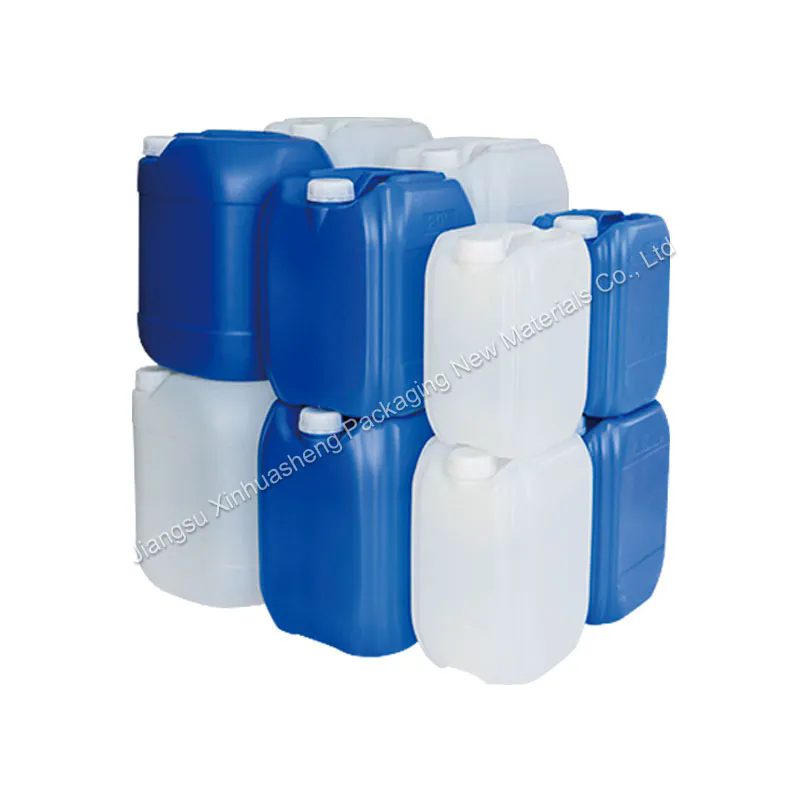Chemical Stack Buckets: Essential Tools for Safe and Efficient Chemical Handling
2024-08-28
In various industries, the safe and efficient handling of chemicals is paramount. Chemical stack buckets are critical tools designed to facilitate this process, offering both convenience and safety. These specialized containers are engineered to manage chemical storage, transportation, and usage, ensuring compliance with safety regulations and minimizing environmental impact. In this blog, we’ll explore the features, benefits, and applications of chemical stack buckets, highlighting why they are essential for effective chemical management.
What are Chemical Stack Buckets?
Chemical stack buckets are robust containers specifically designed for the storage and handling of chemicals. They are characterized by their durable construction, stackable design, and chemical-resistant properties. These buckets are typically made from materials such as high-density polyethylene (HDPE) or polypropylene, which offer excellent resistance to a wide range of chemicals and environmental conditions.
The stackable design allows for efficient use of space, making them ideal for environments where multiple buckets need to be stored or transported simultaneously. Chemical stack buckets are used across various sectors, including manufacturing, laboratories, agriculture, and environmental management.
Key Features of Chemical Stack Buckets
1. Durable Materials: Chemical stack buckets are constructed from materials that can withstand exposure to harsh chemicals, high temperatures, and mechanical stress. This ensures long-lasting performance and reliability.
2. Stackable Design: The buckets are designed to be stackable, allowing for efficient storage and organization. This feature is especially useful in warehouses or storage facilities where space is limited.
3. Chemical Resistance: These buckets are formulated to resist corrosion, degradation, and leakage when in contact with a wide range of chemicals, including acids, bases, solvents, and detergents.
4. Secure Lids: Many chemical stack buckets come with secure, tamper-proof lids that help prevent spills and contamination. Some lids feature locking mechanisms or seals for added security.
5. Ergonomic Handles: The buckets often have ergonomic handles or grips, making them easier to carry and maneuver, even when filled with heavy or hazardous substances.
6. Compliance with Regulations: Chemical stack buckets are designed to meet industry standards and regulations for the safe handling and storage of chemicals, ensuring compliance with safety and environmental requirements.
Benefits of Using Chemical Stack Buckets
1. Enhanced Safety: By providing a secure and durable container for chemicals, these buckets help prevent spills, leaks, and contamination, reducing the risk of accidents and exposure to hazardous substances.
2. Efficient Storage: The stackable design allows for organized and efficient storage of chemicals. This helps maximize space and facilitates easy access to the required materials.
3. Reduced Environmental Impact: The use of chemical-resistant materials helps prevent leaks and spills, minimizing the potential environmental impact of chemical handling and disposal.
4. Ease of Use: The ergonomic handles and secure lids make the buckets easy to use and transport, even when handling large volumes of chemicals.
5. Cost-Effective: The durability and longevity of chemical stack buckets make them a cost-effective solution for chemical storage and handling, reducing the need for frequent replacements.
6. Compliance: Using chemical stack buckets helps ensure that your operations comply with safety and environmental regulations, reducing the risk of fines and legal issues.
Applications of Chemical Stack Buckets
1. Manufacturing: In manufacturing facilities, chemical stack buckets are used to store and transport raw materials, chemicals, and cleaning agents. Their durability and stackability make them ideal for managing large volumes of substances.
2. Laboratories: Laboratories use chemical stack buckets to handle and store various reagents, solvents, and chemicals. The secure lids and chemical-resistant properties help ensure safety and prevent contamination.
3. Agriculture: In the agricultural sector, chemical stack buckets are used to store pesticides, herbicides, and fertilizers. Their resistance to chemicals and ability to be stacked make them practical for farm and greenhouse use.
4. Environmental Management: Chemical stack buckets are used for the safe storage and transportation of hazardous waste and chemicals in environmental management and waste disposal operations.
5. Cleaning and Maintenance: These buckets are used to store and transport cleaning chemicals and maintenance products. Their sturdy construction ensures that they can handle the demands of regular use in industrial and commercial settings.
6. Construction: In construction, chemical stack buckets are used to manage and store construction chemicals, adhesives, and sealants. Their ability to withstand harsh conditions and chemical exposure makes them suitable for construction sites.
How to Choose the Right Chemical Stack Bucket
1. Material Compatibility: Ensure that the bucket material is compatible with the chemicals you intend to store. Check the chemical resistance of the material to avoid degradation or leaks.
2. Capacity: Choose a bucket size that meets your storage and handling needs. Consider the volume of chemicals you need to manage and select a capacity that accommodates your requirements.
3. Stackability: Verify that the buckets have a stackable design if efficient storage is important for your application. Check for features like interlocking rims or bases that facilitate secure stacking.
4. Lid Type: Depending on your needs, select a bucket with a secure lid, tamper-evident features, or locking mechanisms to prevent spills and contamination.
5. Handle Design: Choose a bucket with ergonomic handles or grips that make it easy to carry and maneuver, especially when dealing with heavy or hazardous materials.
6. Compliance: Ensure that the buckets meet industry standards and regulations for chemical handling and storage. This helps ensure safety and regulatory compliance.
Maintenance Tips for Chemical Stack Buckets
1. Regular Inspection: Periodically inspect the buckets for any signs of wear, damage, or leaks. Replace any buckets that show signs of deterioration to maintain safety.
2. Cleaning: Clean the buckets regularly to remove any residual chemicals or contaminants. Follow the manufacturer’s guidelines for cleaning to avoid damaging the bucket.
3. Proper Storage: Store the buckets in a cool, dry place away from direct sunlight and extreme temperatures. This helps maintain their structural integrity and chemical resistance.
4. Handle with Care: Use the buckets according to their design specifications and avoid overloading or dropping them. Proper handling helps prolong the life of the buckets.
5. Disposal: Follow proper disposal procedures for chemical containers according to local regulations. Ensure that empty buckets are properly cleaned and disposed of to prevent environmental contamination.
Conclusion
Chemical stack buckets are essential tools for the safe and efficient handling of chemicals across various industries. Their durable construction, chemical resistance, and stackable design offer numerous benefits, including enhanced safety, efficient storage, and compliance with regulations. By understanding their features and applications, you can select the right chemical stack buckets for your needs and ensure effective management of chemicals in your operations. Whether you’re working in manufacturing, laboratories, agriculture, or environmental management, these buckets play a crucial role in maintaining safety and efficiency in chemical handling.



